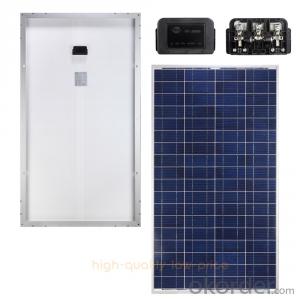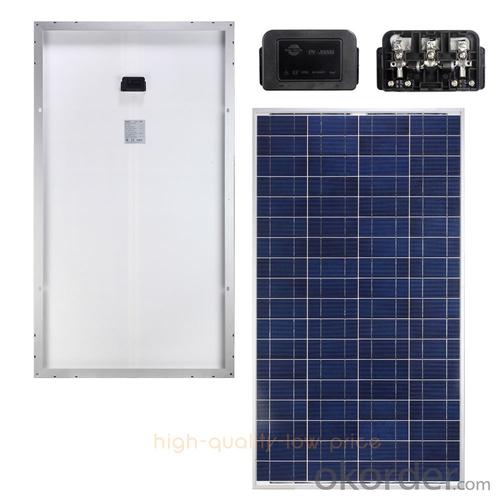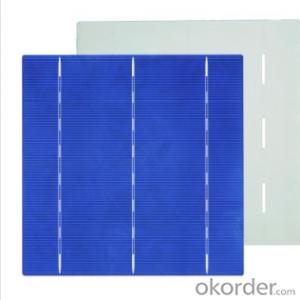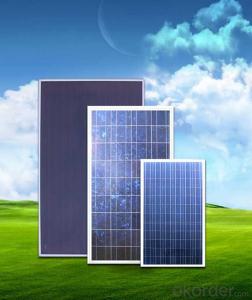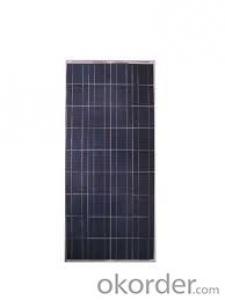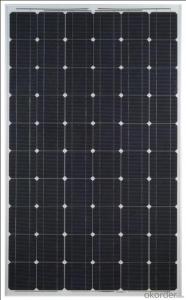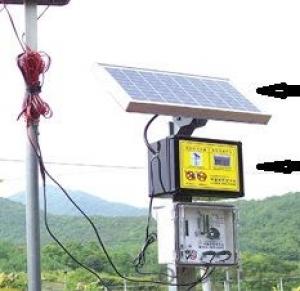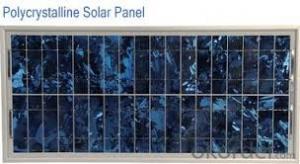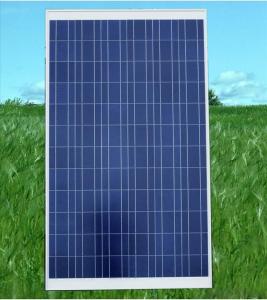310W Sphelar Solar Cells Poly Solar Panel with 25 Years Warranty CNBM
- Loading Port:
- Qingdao
- Payment Terms:
- TT OR LC
- Min Order Qty:
- 10 set
- Supply Capability:
- 300000 set/month
OKorder Service Pledge
OKorder Financial Service
You Might Also Like
Polycrystalline Solar Modules
CNBM offers a range of small, medium and large polycrystalline solar modules, designed for a range of requirements.
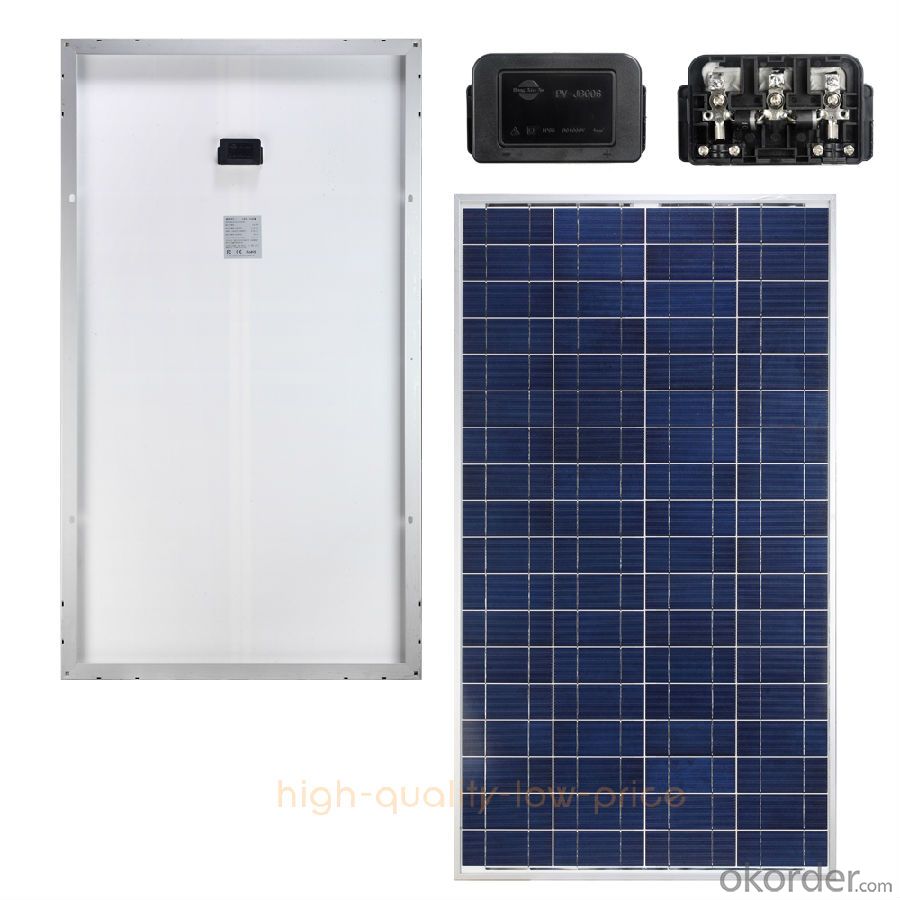
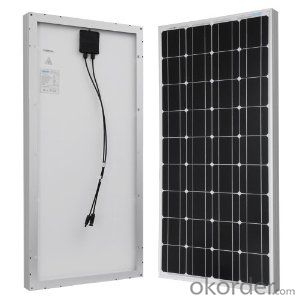
Specificatios:
Tolerance | +/-3% |
Cell | Polycrystalline silicon solar cells (156 x 156mm) |
N0. of Cells | 60 (10 x 6) |
Dimension of Modules (mm) | 1650 x 990 x 40 |
Weight (kg) | 25.5 |
Limits:
Operating Temperature | -40~+85? |
Storage Temperature | -40~+85? |
Maximum System Voltage | 1000 VDC max. |
Hail Impact | Diameter of 28mm with impact speed |
Temperature and Coefficients:
NOCT | 48C+/-2? |
Voltage temperature coefficient (%/K) | -0.35 |
Current temperature coefficient (%/K) | 0.05 |
Power temperature coefficient (%/K) | -0.45 |
Characteristics:
Model: | SGM-200P | SGM-210P | SGM-220P |
Max-power voltage Vmp (V) | 29.2 | 29.4 | 29.41 |
Max-power current Imp (A) | 6.85 | 7.14 | 7.48 |
Open-circuit voltage Voc (V) | 36.5 | 36.69 | 36.9 |
Short-Circuit Current Isc (A) | 7.28 | 7.6 | 7.93 |
Max-power Pm(W) | 200 | 210 | 220 |
Model: | SGM-230P |
Max-power voltage Vmp (V) | 29.8 |
Max-power current Imp (A) | 7.72 |
Open-circuit voltage Voc (V) | 37.31 |
Short-Circuit Current Isc (A) | 8.19 |
Max-power Pm(W) | 230 |
STC: Irradiance 1000W/m2, module temperature 25?, AM-=1.5
Poly Crystalline Solar Panels Specifications Range
Maximum Power (Pm) | Dimension | Weight | Operating Voltage (Vmp) | Operating Current (Imp) | Open Circuit Voltage (Voc) | Short Circuit Current (Isc) |
0.45W | 140x80x10mm | 0.08kg | 3.3V | 150mA | 4.6V | 160mA |
1.0W | 162x140x10mm | 0.16kg | 7.5V | 150mA | 10.3V | 160mA |
4.5W | 269x251x23mm | 0.8kg | 16.5V | 0.27A | 20.5V | 0.3A |
10W | 420.1×268.9×22.6mm | 1.92kg | 17.5V | 0.58A | 20.5V | 0.6A |
20W | 425x502x50mm | 3.0kg | 16.8V | 1.19A | 21.0V | 1.29A |
30W | 593x502x22.6mm | 3.9kg | 16.8V | 1.78A | 21.0V | 1.94A |
40W | 655x537x50mm | 5.75kg | 17.3V | 2.31A | 22.1V | 2.54A |
50W | 839x537x50mm | 6.0kg | 17.5V | 2.9A | 21.8V | 3.17A |
65W | 1111x502x50mm | 7.2kg | 17.6V | 3.69A | 22.1V | 3.99A |
80W | 1204x537x50mm | 7.7kg | 17.6V | 4.55A | 22.1V | 4.8A |
- Q: How do people price solar cells? Is it based on a specific way of calculating the cost of solar cells?
- The solar cells price is high, because it will take at least 8 years to recover the cost of a the solar cell power supply system.
- Q: Can solar cells be used in emergency lighting?
- Yes, solar cells can be used in emergency lighting. Solar-powered emergency lights are designed to provide illumination during power outages or emergencies by utilizing solar panels to convert sunlight into electricity, which is then stored in batteries for later use. This makes them a reliable and sustainable option for emergency lighting solutions.
- Q: How to define the poly solar cells as the A Grade one?
- If the poly solar cells is high module conversion efficiency, through superior manufacturing technology Guaranteed -1% to +3%, it is very possibily the A grade.
- Q: How do solar cells convert sunlight into electricity?
- Solar cells convert sunlight into electricity through the photovoltaic effect. When sunlight hits the solar cell, it excites the electrons in the cell's semiconductor material, causing them to flow as an electric current. This flow of electrons is then captured and harnessed as usable electricity.
- Q: Can solar cells be used to power air conditioning systems?
- Yes, solar cells can be used to power air conditioning systems. However, the efficiency and capacity of the solar cells, as well as the size of the air conditioning system, need to be considered to ensure sufficient power supply.
- Q: What is the impact of dust storms on solar cell efficiency?
- Dust storms have a negative impact on solar cell efficiency. The accumulation of dust particles on the surface of solar panels obstructs sunlight from reaching the photovoltaic cells, reducing their ability to convert sunlight into electricity. This dust buildup decreases the overall power output of the solar panels and requires regular cleaning and maintenance to maintain optimal efficiency.
- Q: Can solar cells be used in electric fence systems?
- Yes, solar cells can be used in electric fence systems. Solar panels can generate electricity from sunlight, which can then be stored in batteries and used to power electric fences. This eliminates the need for a connection to the main power grid and makes electric fence systems more flexible and cost-effective in remote areas.
- Q: Can solar cells be used in powering autonomous vehicles?
- Yes, solar cells can be used in powering autonomous vehicles. Solar energy can be harnessed using solar panels and converted into electrical energy to power the vehicle's battery or directly power its systems. This allows for a sustainable and renewable source of energy, reducing the reliance on fossil fuels and increasing the vehicle's range and efficiency. However, it's important to note that the amount of energy generated by solar cells may not be sufficient to fully power the vehicle, so it is often used in combination with other energy sources like batteries or fuel cells.
- Q: Can solar cells be used on rooftops with different orientations?
- Yes, solar cells can be used on rooftops with different orientations. While the ideal orientation for maximum solar energy production is typically facing south, solar panels can still generate electricity when installed on rooftops facing east, west, or even north. The efficiency and energy output may be slightly lower, but advancements in solar technology and the ability to tilt and adjust panel angles can help optimize energy production on rooftops with varying orientations.
- Q: What is the window material in the solar cell? what's the effect?
- Because the window layer near the surface, the defect is very much, if the absorption of light generated photogenerated carriers, then it is easy to die, do not contribute to the battery output, the absorption of light are wasted, reducing battery efficiency.
Send your message to us
310W Sphelar Solar Cells Poly Solar Panel with 25 Years Warranty CNBM
- Loading Port:
- Qingdao
- Payment Terms:
- TT OR LC
- Min Order Qty:
- 10 set
- Supply Capability:
- 300000 set/month
OKorder Service Pledge
OKorder Financial Service
Similar products
Hot products
Hot Searches
Related keywords
